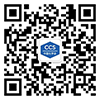FACS NEWSLETTER
New Interaction of FACS
发布时间:2016年05月06日 来源:中国化学会
| Alison Green[†] Australian Journal of Chemistry - an International Journal for Chemical Science www.publish.csiro.au/journals/ajc CSIRO Publishing, 150 Oxford Street Collingwood 3066, Australia e-mail: ajc@publish.csiro.au |
|
To help facilitate interaction between members of the Federation of Asian Chemical Societies and Australian Journal of Chemistry - an International Journal for Chemical Science, we have appointed two regional receiving editors[*] for submissions from FACS members outside Australia: Dr San Thang, Secretary General of FACS, and Senior Principal Research Scientist at CSIRO. Dr Thang was born in Vietnam, and his research career has spanned Saigon (University of Saigon), Brisbane (Griffith University) and Melbourne (ICI and CSIRO). He is a co-inventor of the RAFT process for preparing well-defined polymers, and his expertise includes polymer, radical and organic chemistry. Dr Liming Dai was born in China, and his career to date has included periods at the Australian National University, at Cambridge University and the University of Illinois. Dr Dai's expertise lies in physical and materials chemistry. He holds a guest professorship from the Chinese Academy of Sciences and is a Principal Research Scientist at CSIRO. He also serves as an Editorial Board Member for the Journal of Nanoscience and Nanotechnology.
We are keen to show our support for all member societies of FACS, and would like to invite those members to submit their highest quality work to Australian Journal of Chemistry - an International Journal for Chemical Science. We believe that it is important for such a Federation to have a regional journal with a truly international readership (48% North and South America, 24% Europe, 28% Australasia) that can act as a showcase for the best chemical research in the region mixed with current international research - as is the case for Angewandte Chemie and Journal of the American Chemical Society, for instance, which publish excellent papers from around the world, but which also act as showcases for their regional chemical communities (Germany and the USA, respectively).
2002 is the 55th year of publication of Australian Journal of Chemistry - an International Journal for Chemical Science. The journal appears twelve times per year in print and online (www.publish.csiro.au/journals/ajc) and publishes research from all areas of chemical science, including synthesis, structure, natural products, new materials, supramolecular chemistry, computational chemistry, biological chemistry and physics, and nanotechnology. The Journal's aim is to be an accurate reflection of the current state of chemistry research, and to be a showcase for the best chemical science in Australasia. It should facilitate the communication of information between researchers, and should help to educate and inspire potential young researchers. The journal should be easy to use and a pleasure to read while maintaining the excellent standards of refereeing and editing built up over the last 54 years.
A number of changes were introduced during the course of 2001 bearing these goals in mind: a new subtitle reflects the broader scope of the journal in terms of both geographic origin and subject matter of the papers published. The journal cover features a new image each issue (issue 6 is shown here). The current cover picture is also featured on the journal's homepage:http://www.publish.csiro.au/journals/ajc. The Table of Contents features Graphical Abstracts (with a short text describing the highlights and significance of each article). In addition, we have introduced two new articles: Current Chemistry articles (short papers summarising highlights in a topical or developing field of chemistry: general articles designed to serve as an introduction to the field for the non-specialist), and Focus articles (1 page accounts by a postgraduate (PhD student or postdoc) reporting about a new reagent or technique). Several special issues will be published over the next 18 months on Colloids and Surface Science (54/8), Materials Chemistry for the Future (54/9), Carbohydrates (55/1), and Living Free-Radical Polymerisation (55/3).
Publication times have been significantly reduced (time from submission to acceptance has been reduced from 130 to 80 days) by the introduction of electronic submission (most authors are submitting their manuscripts via e-mail as PDF files) and processing (manuscripts are sent to referees via e-mail, as are letters to authors with referees' reports).
On the personnel front, Dr J. M. Cameron has returned to work part-time to continue the high-calibre editorial work achieved over the last 7 years. Dr S. D. Kean has joined the journal full-time following a PhD at the University of Adelaide, and a post-doctoral period at Durham in England. I took on the Managing Editor role in 2001, succeeding Dr John Zdysiewicz, who retired in 2000 after 25 years with the journal.
We hope that members of FACS will feel a sense of ownership of Aust. J. Chem. - Int. J. Chem. Sci. In turn, it is our role to ensure that the journal reflects the current state of research in Australasia and the rest of the world. We encourage you to submit your best work to Australian Journal of Chemistry - an International Journal for Chemical Science, and hope that you will enjoy being part of the exciting times ahead.
[*] To submit a manuscript to Liming Dai or San Thang, please first read the Notice to Authors, available atwww.publish.csiro.au/journals/ajc/nta.cfm, to ensure that your manuscript is correctly formatted for the Journal. Then contact Dr Dai at Liming.Dai@csiro.au or Dr Thang at San.Thang@csiro.au.
[†] Alison Green completed her PhD in physical organic chemistry and crystallography with Dr Jonathan White at the University of Melbourne in 1997. On receipt of an Alexander von Humboldt Postdoctoral Fellowship she moved to Marburg, Germany to carry out research with Professor Gernot Boche on mechanistic organometallic chemistry. In 1999 she joined Wiley-VCH in Weinheim as a trainee editor with Dr Peter Gregory on the journal Advanced Materials, being promoted to Associate Editor in 2000 before returning to Melbourne in 2001 to take up her present position as Editor of Australian Journal of Chemistry - an International Journal for Chemical Science.



